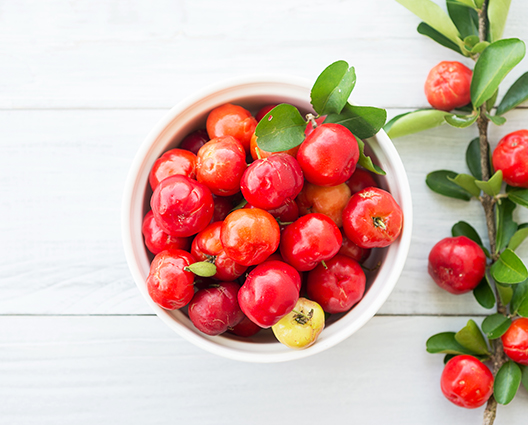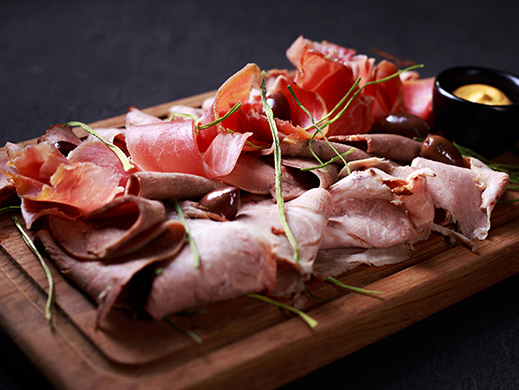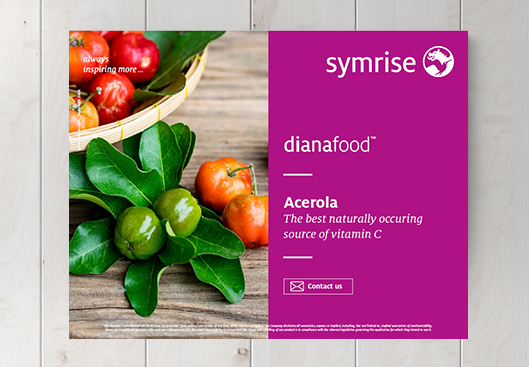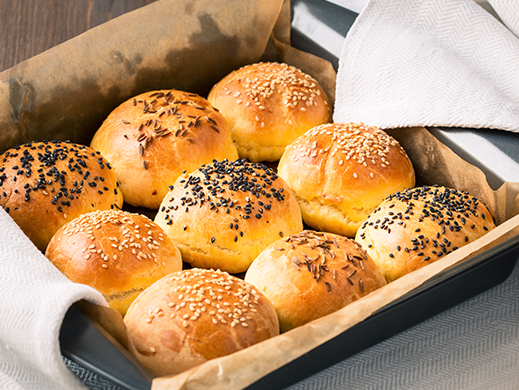
Why choose our acerola solutions
• 100% guaranteed natural and native vitamin C
• Specifications from 17% to 34% vitamin C
• Acerowell™ for healthy aging: 1st acerola products in the market with complete polyphenol characterization and standardization
• Perfect clean label alternative to synthetic antioxidants such as ascorbic acid and sodium erythorbate
• Conventional, EU, US and China organic and Fair Trade grades available
• High quality and safety standards including third party testings
• Nutritional and health benefits
• Enable health claims
• Full traceability of the supply chain from field to product delivery

Acerola 34% for fresh meat and meat curing
• Perfect clean label alternative to synthetic antioxidants such as ascorbic acid and sodium erythorbate
• Highest content of native and natural vitamin C on the market with our patented acerola powder 34%
• Ensures pH stabilization, perfectly adapted to processed meat applications: no impact on cooking yield
• Acts as an efficient curing booster and residual nitrate reducer
• Improves overall fresh meat color stability
• Excellent flowability with no impact on meat color and texture
• Organic grade available
• Tailor-made solutions available on request (standardization, clear solution, format...)

Acerola to support health and wellness
Natural vitamin C is an efficient antioxidant and an essential synthesis cofactor. Our range of acerola juices and powders support nutritional fortification and many health functions:
• Immunity
• Energy & vitality
• Metabolic health
• Beauty from within
• Cell protection
• Iron absorption
• Memory and mood
• Joint health

Get our acerola for health solutions brochure

Acerola as dough improver
Our acerola powders are the perfect clean label solutions for replacement of synthetic ascorbic acid:
• Improvement of bread quality as flour improver and dough conditionner: anti staling effect, softness improvement
• Significant shelf life increase of your bakery applications
Our acerola story
Acerola is currently recognized as one of the world's best natural source of vitamin C content. It contains 50 times more vitamin C than orange and our acerola has twice as much vitamin C as regular acerola due to unique processing. But what is the story behind this little cherry? Where does acerola come from? How is it grown and processed?






